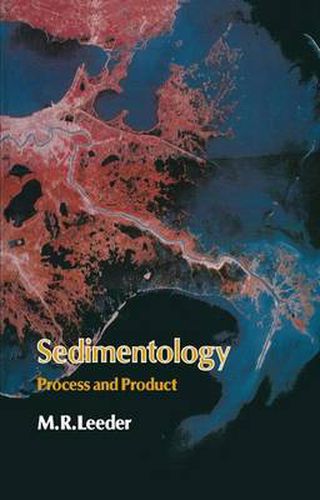Readings Newsletter
Become a Readings Member to make your shopping experience even easier.
Sign in or sign up for free!
You’re not far away from qualifying for FREE standard shipping within Australia
You’ve qualified for FREE standard shipping within Australia
The cart is loading…






The origin, dispersal, deposition and burial of natural sediment grains is the central concern of sedimentology. The subject is truly inter disciplinary, commands the attention of Earth scientists, is of consider able interest to fluid dynamicists and civil engineers, and it finds widespread practical applications in industry. Sedimentology may be approached from two viewpoints: a descrip tive approach, as exemplified by traditional petrography and facies analysis, and a quantitative approach through the physical and chemical sciences. Both approaches are complementary and must be used in tandem if the recent remarkable progress in the field is to be sustained. This text aims to introduce such a combined approach to senior undergraduate students, graduate students and to interested professional Earth scientists. Thus the many descriptive diagrams in the text are counterbalanced by the use of basic physical and chemical reasoning through equations. I have tried to construct a text that follows logically on from the origin of sediment grains through fluid flow, transport, deposition and diagenesis (the change from sediment to rock). The text has been written assuming that some basic previous instruction has been given in the Earth sciences and in general physics and chemistry. Certain important derivations are given in appendices. I have avoided advanced mathematical treatment since it is my opinion that recogni tion of the basic physical or chemical basis to a problem is more important to the student than the formal mathematical reduction of poorly gathered data. As T. H.
$9.00 standard shipping within Australia
FREE standard shipping within Australia for orders over $100.00
Express & International shipping calculated at checkout
The origin, dispersal, deposition and burial of natural sediment grains is the central concern of sedimentology. The subject is truly inter disciplinary, commands the attention of Earth scientists, is of consider able interest to fluid dynamicists and civil engineers, and it finds widespread practical applications in industry. Sedimentology may be approached from two viewpoints: a descrip tive approach, as exemplified by traditional petrography and facies analysis, and a quantitative approach through the physical and chemical sciences. Both approaches are complementary and must be used in tandem if the recent remarkable progress in the field is to be sustained. This text aims to introduce such a combined approach to senior undergraduate students, graduate students and to interested professional Earth scientists. Thus the many descriptive diagrams in the text are counterbalanced by the use of basic physical and chemical reasoning through equations. I have tried to construct a text that follows logically on from the origin of sediment grains through fluid flow, transport, deposition and diagenesis (the change from sediment to rock). The text has been written assuming that some basic previous instruction has been given in the Earth sciences and in general physics and chemistry. Certain important derivations are given in appendices. I have avoided advanced mathematical treatment since it is my opinion that recogni tion of the basic physical or chemical basis to a problem is more important to the student than the formal mathematical reduction of poorly gathered data. As T. H.